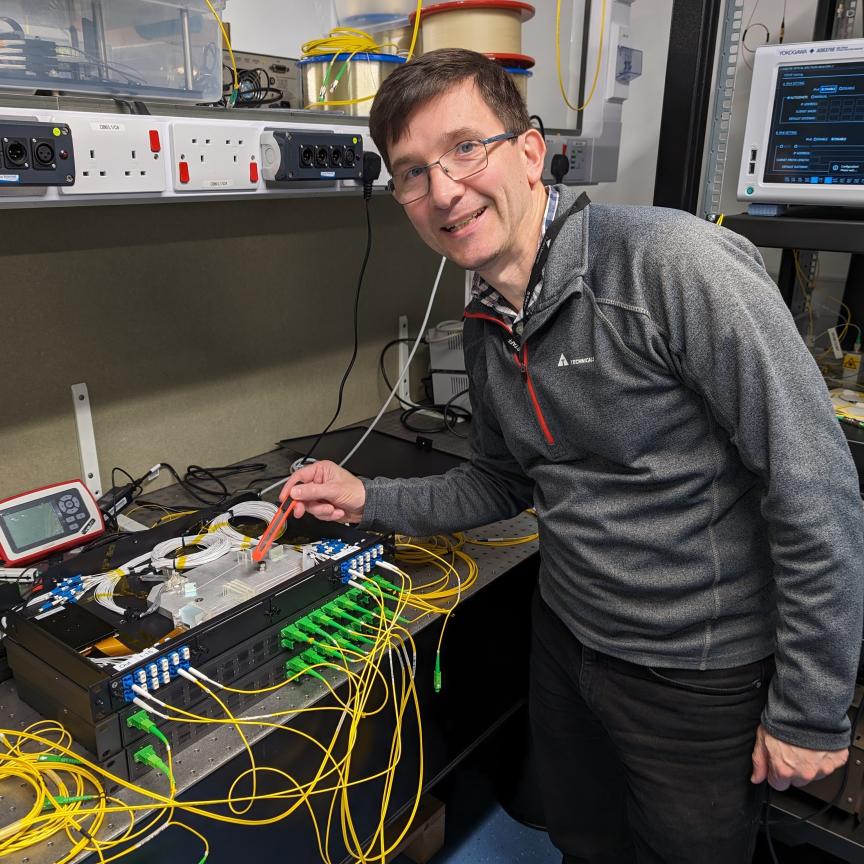As data consumption continues to skyrocket, network operators are faced with the pressing need to expand their fibre capacity to meet growing customer demands. One solution that has been gaining traction is the deployment of comprehensive conventional band plus long wavelength band (C+L) systems. By tapping into the previously untapped L band, operators can potentially double the amount of available spectrum, paving the way for enhanced capacity and improved network performance.
"The fibre capacity growth is reaching its limits, and incremental improvements are becoming harder to achieve," highlights Paul Momtahan, Director of Solutions Marketing at Infinera. "Expanding into the L band offers an attractive proposition, especially for long-haul networks or areas with fibre constraints that require additional capacity."
Traditionally, capacity has relied on the C band, which provides 4.8 terahertz of spectrum. However, as the Shannon limit approaches for optical engine spectral efficiency, significant improvements in fibre capacity become increasingly challenging. This limitation has prompted the exploration of the L band, a less tapped resource that could potentially double the available spectrum.
The benefits of C+L
The use of the L band in conjunction with the C band could unlock some key benefits for network operators. The increased spectrum allows for a boost in network capacity, enabling operators to support the growing demands of bandwidth-intensive applications and services. C+L solutions are also able to provide a more flexible approach to expanding capacity, allowing operators to future-proof their networks by starting with a C band infrastructure and selectively upgrading specific components with L band technology as the need arises. This approach ensures cost-effectiveness and minimal disruption to the existing network.
Understanding the challenges of C+L
While the potential of the L band is promising, there are a number of technical challenges that should be addressed in order to really maximise its benefits. Momtahan elaborates: “One significant challenge arises from stimulated Raman scattering,which is commonly used for positive amplification. However, in the context of C+L systems, this same effect causes an interaction between the C and L bands that results in a power tilt, which can present multiple issues.”
One such issue is that it can hamper the recovery time from failures, as rebalancing the power levels between the C and L bands can take up to 10 minutes without appropriate techniques in place. a failure. “10 minutes to recover from a failure is too long,” highlights Momtahan.
The power tilt can also introduce some complexities in provisioning wavelengths and managing complex network topologies. The rules governing the allocation of wavelengths in both the C and L bands can become convoluted, making it challenging for operators to efficiently provision and maintain wavelengths across diverse network architectures such as rings, chains, or meshes. “The additional problem that you have with C plus L,” adds Momtahan, “is the cost. You have to add extra L band amplifiers and L band wavelength selective switches, if you have an old legacy C band system you may even have to replace the entire line system.”
The solutions available
To address these challenges, Infinera has developed a number of solutions, such as the Flex ILS Line System, which is designed to offer robust solutions for C+L deployments. Momtahan reveals: "For example, we designed the C band system so that it could be expanded to L band as and when it’s needed. So an operator can start off with a C band that's L band expandable and then, when they need the extra capacity, they can upgrade the amplifiers and the ROADMs by adding the L band components. So that's pretty cost effective. They don't need to incur that cost on day one, and when they upgrade they don't need to upgrade the entire network, just the parts where they need that extra spectrum.”
Another solution is the use of C +L ASE idlers which pump noise into the C+L band that essentially mimics a wavelength. Elaborates Momtahan: “Essentially, the C+L spectrum is always filled so there is no worries about adding or losing channels because if a channel is lost, it can be filled with ASE noise. If a channel is added, that ASC noise can be replaced with the wavelength. So there's a cost of that but it makes life a lot simpler. And it allows for very fast recovery, now down to 10 seconds.”
In addition to the ASE idlers, Infinera's solution includes link control software that automates the management of power levels. This software dynamically adjusts ASE noise as needed, enabling quick amplifier adjustments and preventing errors in network loading. Whether the network has a simple or complex topology, operators can benefit from fast recovery and efficient network control.
Then, of course, there is the ICE6 optical engine, for which the company has an L band version.”This had a couple of nice features,” says Momtahan. “It's compatible with Infinera’s L band but some of the other vendors use a slightly different frequency range for the L band, so we designed the CHM6 L sleds so that we can support our own L band as well as other suppliers’ L bands on these slightly different frequencies. We can also have protection so that one wavelength goes over the C band or one wavelength goes over the L band connecting the same clients.”
Looking to the future, Momtahan reveals: “What we're looking to do is evolve to Super C and Super L. Super C goes to over six terahertz and Super L also it goes to 6.1 terahertz. A next-generation line system and the GX will support Super C and Super L, and that will provide more than 12 terahertz of spectrum and enable the operator to go to over 100Tb/s.” As the demand for higher bandwidth and enhanced connectivity continues to surge, network operators need to find solutions to double fibre capacity and overcome technical challenges. Comprehensive C+L solutions, leveraging the untapped L band, offer a promising avenue to meet these demands but operators must take into account the challenges this could present, and look to find the right solution for them.



